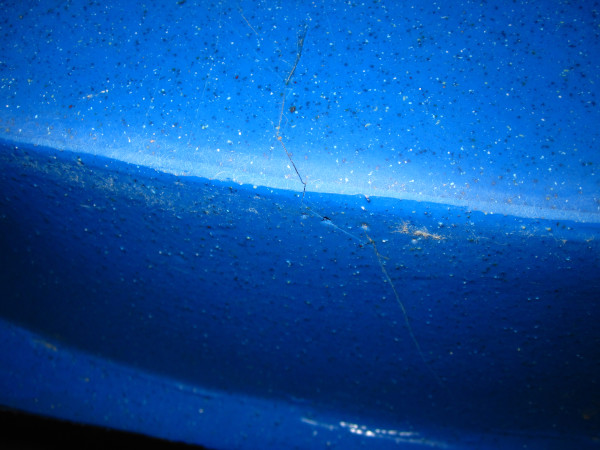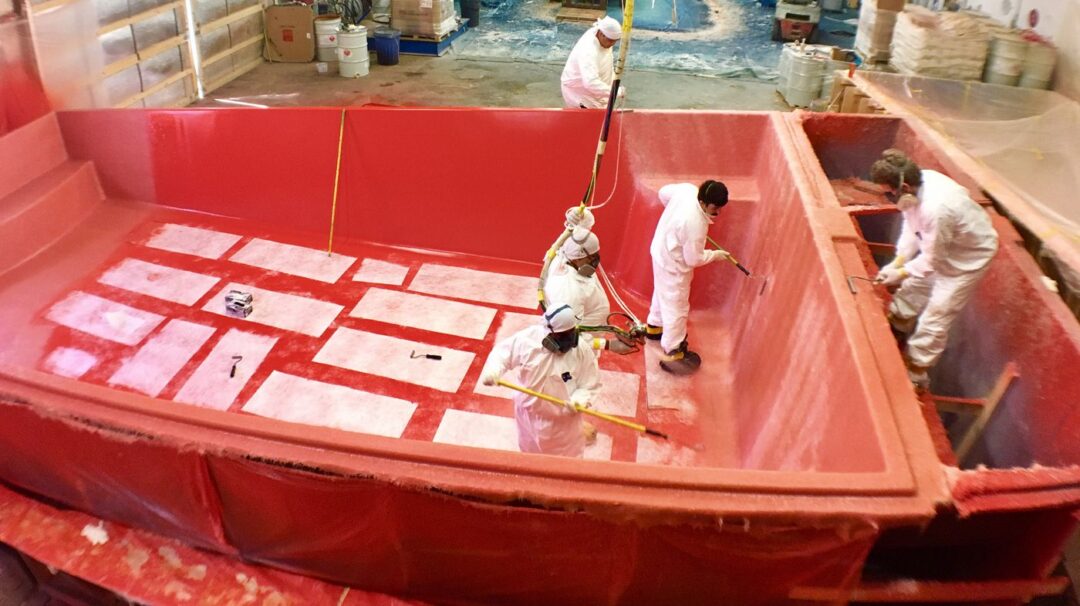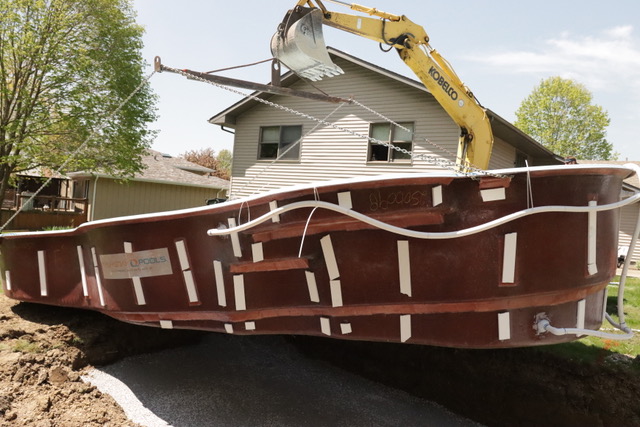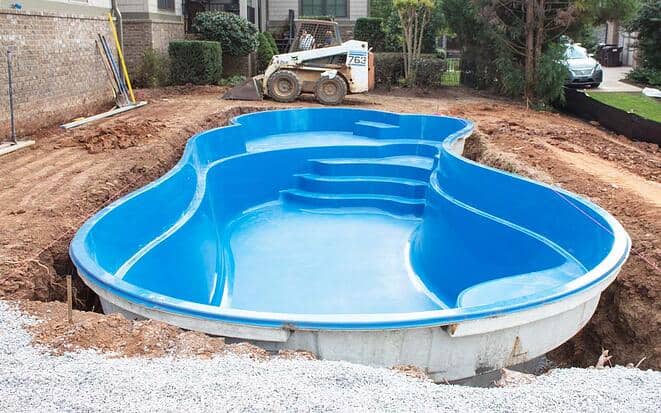Fiberglass Pool Problems: Can They Crack?

As much as we wish they were, no inground pool is without potential problems or repairs. Fiberglass pools are no different. The short answer is yes, fiberglass pools can crack, but it’s not the type or severity of crack that you’re probably imagining.
A crack in a fiberglass pool is what we call a gel coat spider crack. The gel coat is the surface layer of a fiberglass pool. It is the smooth, sparkly layer of the pool that you see and walk on. A fiberglass pool is made up of multiple layers of fiberglass and resin reinforcement. Do not fear, cracks typically only occur in the gel coat surface layer of a fiberglass pool and will not extend to the structural layers unless the cracked area is under significant pressure.
At Royal Pools G2 Landscaping, we love installing fiberglass pools. We recognize gel coat cracking as a legitimate issue. If you’re considering a fiberglass pool, you should be aware of gel coat spider cracks, how they happen, and how to prevent them. So, let’s get into it!
What causes gel coat cracks in fiberglass pools?
Several factors lead to a gel coat spider crack in your fiberglass pool. Including:
- Improper manufacturing
- Poor installation
- Improper shipping
- Ground movement
More Fiberglass Pool Problems and Solutions
Improper Manufacturing

The structural integrity of a fiberglass pool is the essential component to preventing gel coat spider cracks. Using a weaker resin or composing too thin layers of fiberglass will result in spider cracking before the pool is even set in the ground. In certain cases, a gel coat is applied thicker than what is required, which will be prone to cracking. Be sure you’re purchasing a pool from a manufacturer that uses a strong multi-layered fiberglass composite reinforced with viny lester resin.
Poor Installation

More often than not, spider cracks are a result of improper or lazy installation practices on the part of a chosen pool installation company. A fiberglass pool needs to be painstakingly set in the ground, on firm ground that will support the pool and keep it level. Ground protrusions underneath the pool will cast excessive pressure on the pool floor which could lead to a crack.
If, during the installation process, the pool has to be lifted out and back into the hole multiple times because of improper level, the pressure from being lifted and lowered multiple times can put stress on the shell causing cracks. These cracks may show up right away or take time to appear.
Improper Shipping
Unlike concrete and vinyl liner pools, fiberglass pools are not constructed entirely on-site. These pools are constructed in controlled factories that specialize in fiberglass construction. Upon completion of the pool shell, it is transported via freight to its future home.
The journey from the fiberglass pool warehouse to the backyard construction site can often be a rocky one. If the pool is not tightly secured to the transportation vehicle, a long journey full of bumps and dips in the road can quickly put unwanted pressure on the pool shell.
Ground Movement

Ground movement is a problem for any pool, fiberglass is no exception. Shifts in the soil around the pool can also exert unwanted pressure on the fiberglass pool shell. To mitigate this potential issue, a thorough land inspection will need to take place to determine the best place to place the pool that will not take in any ground movement. Luckily, if the pool is properly backfilled and set, this issue is unlikely to happen.
What’s the solution to gel coat cracks?
The good thing about gel coat cracks is that they’re hardly noticeable, and do little in the way of subtracting aesthetic value from the pool. The fact that they’re hardly noticeable is a double-edged sword, however, because you may not know how long the crack has been there when you first notice it.
The best way to avoid any potential gel coat spider cracks before the pool is even put in your yard is by vetting and finding the absolute best, most experienced, and most trustworthy pool installer in your area. An experienced installer makes all the difference in the world.
Ensure that the installer you pick not only purchases their pools from a reputable fiberglass pool builder, but also provides a thorough walk-through of your yard and a detailed description of their installation process. Ask about their techniques for combating gel coat spider cracks. If they tell you that the pool will never crack, or that they cannot prevent them from happening, you may want to consider a different contractor.
It’s not a bad idea to ask previous customers of a given pool installation company if they have experienced any gel coat cracks since having their pool installed. This will give you a good idea of the long-term quality of a given company’s work.
Conclusion
A crack in your fiberglass pool’s gel coat is not the death bell for your pool. No one wants to see a crack in their pool, but a gel coat spider crack is easily preventable as long as you work with an experienced pool manufacturer and installer. The best pool installer will be the one who’s honest about problems like gel coat cracks.
Do you have more fiberglass pool questions? If so, check out the articles below. For more educational content on all things pools and landscaping, check out our learning hub at the top of our page. Have a great day!
5 Awesome Rectangular Fiberglass Pool Designs in 2024
Why Do Fiberglass Pools Cost More Upfront?
Fiberglass Pools: 5 Things Your Pool Builder Must Do At Installation
written by Logan Edgemon
